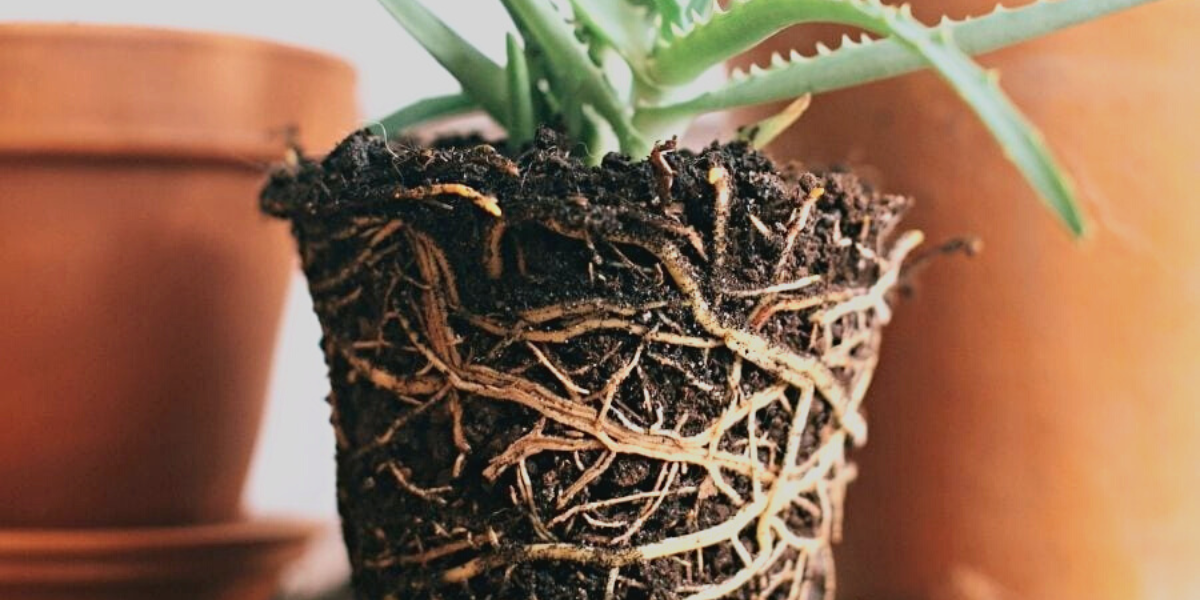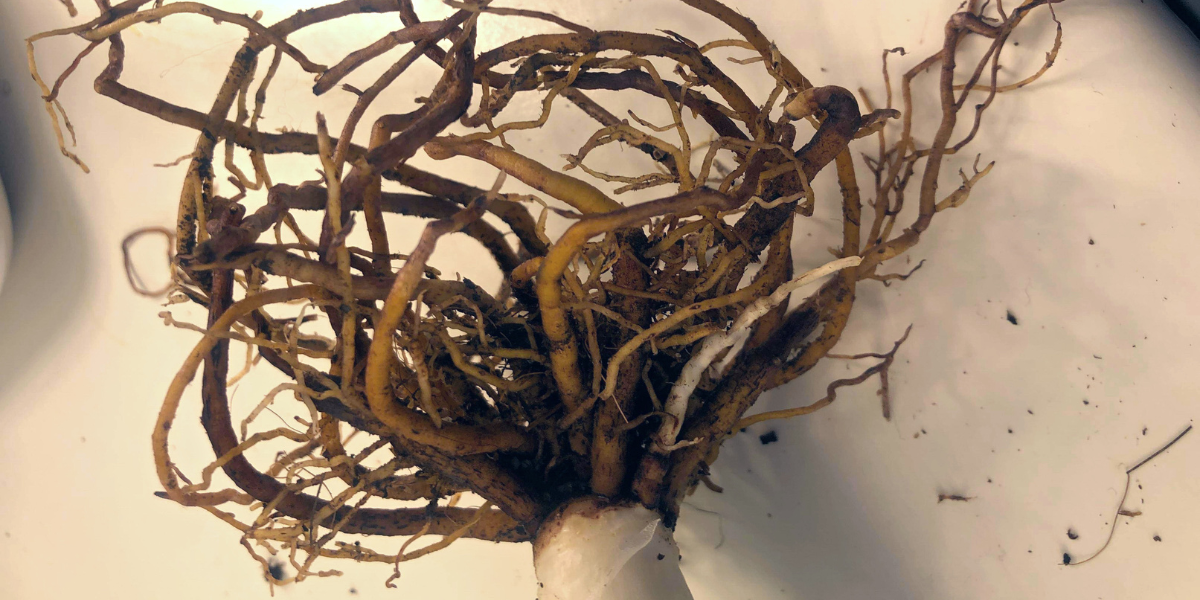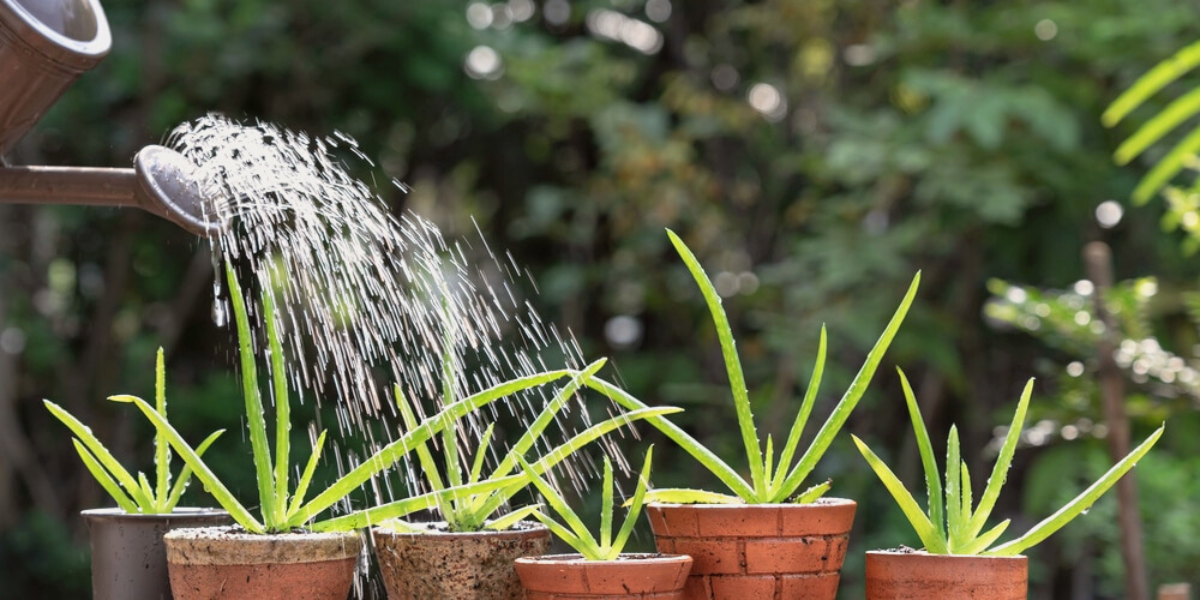Aloe Vera is a succulent plant found in many regions. It has a relatively short stem and long curved leaves full of viscous liquid. It grows well both indoors and outdoors. It is not very whimsical, so even a novice gardener can take care of it without issues. However, blunders can lead to the appearance of pests and such an unpleasant disease as Aloe Vera root rot. Since the main decay processes occur underground, it can be difficult to identify them on time. We’ll tell you what to pay attention to detect early rotting and how to save the Aloe from complete death.
Aloe Root Rot Definition
Aloe Vera does not require any special attention from its owner. It does not need to be regularly fertilized, repotted, sprayed, or trimmed. Since it is succulent, it is excellent at storing moisture. Therefore it will survive if you forget to water it a couple of times or go on vacation without organizing an irrigation system. It would seem that such a simple plant should not get sick. Although many common diseases do not really affect it, root rot can occur, common in all succulents.

The name of this disease speaks for itself. In the flower roots, rotting processes begin to develop, due to which the lower part gradually dies off. Since it takes place underground, you may not immediately notice the disease’s onset. However, as the upper part of the plant no longer receives moisture and beneficial micronutrients from the soil, over time, you will see the first signs of Aloe Vera rot, which indicate that the disease is progressing. Keep in mind that it develops pretty quickly because this plant does not have a well-developed and robust root system, and therefore rot can “eat” it in a short time.
Unlike many other diseases, rot is not caused by pests or bacteria. Among the main reasons for its occurrence are four ones:
- excess moisture due to improper watering;
- the low temperature in the room;
- improperly picked soil;
- the pot is too small.
Thus, the plant health and the appearance of root rot Aloe Vera directly depend on the care conditions. The described reasons are closely related and lead to the development of a fungus, which provokes decay.
Since this flower is native to hot and arid regions, it is resistant to droughts. However, excess moisture with too frequent watering leads to the fact that Aloe Vera begins to feel bad. If you moisten the soil often or too much, it can compact, preventing the roots from “breathing.” As carbon dioxide is hindered from reaching the lower part of the plant, it provokes soil acidification, which makes the nutrients take on a form that roots cannot absorb. Waterlogging and acidity lead to Aloe plant root rot.
At the same time, you still can maintain an optimal watering regime, but if the temperature in the room is too low, which does not allow moisture to dry out, it also leads to root rotting. Hypothermia is especially possible in autumn and spring, as well as in places with strong drafts. In such situations, the ground cools down too quickly and even freezes. Approximately the same effect produces watering with cold water.
Incorrectly selected soil also causes the plant to feel unwell. The fact is that Aloe Vera originally appeared in sandy soils with good drainage. If you use too dense soil, which has a lot of organic matter and retains moisture, it provokes root rot development. A small pot aggravates the situation. If there is not enough room for the root growth in it, they curl up into a tight ring, compressing the ground. It also prevents the soil from drying out well.
Although Aloe Vera plant root rot is an extremely unpleasant thing in itself, it also can provoke other plant diseases. If you don’t detect it early and start treating it, you run the risk of finding some fungal zoospores after some time, leading to scab development. The entire flower might be infected, so you’ll have to dispose of it. That is why it is crucial to identify root rot on time. If you find it difficult to do it yourself, use our application to determine root rot from a photo.
Aloe Vera Root Rot Symptoms and Diagnostics
Since the Aloe root rot develops in the plant’s lower part, which is underground, it is tricky to determine it in its earliest stages. The first thing you may notice is the deterioration of the leaf blades. They can turn yellow and dry out or, conversely, become “doughy,” as if full of water. Gradually, this effect goes up from the lower leaves to the upper ones, they fall off, and the stem becomes bare. Moreover, when many flower growers see yellow leaves, they think that the Aloe Vera is suffering from a lack of water and begin to water it more abundantly. It only makes the situation with root rot worse.

The roots are responsible for the nutrition of the whole plant. When they are damaged, you may notice that the growth of the rotting Aloe plant has slowed down or stopped completely. As the disease progresses, the root stem becomes thinner. In advanced cases, rot can destroy it, causing the trunk to break near the ground. At the same time, a noticeable unpleasant smell of decay begins to emanate from the soil. All this happens in the later stages of root rotting, which is better to avoid.
Often, novice gardeners make one mistake — they examine the roots too late. It is due to the fear of damaging the Aloe’s lower part in the process of removing it from the pot. However, if you think something is wrong with your flower, it’s best to do so as soon as possible. Healthy roots should be:
- dense and durable;
- white, beige, or light brown;
- have no smell.
The roots of Aloe rotting at the base, on the other hand, break easily, are slippery to the touch, are dark brown or black, and stink extremely unpleasantly. If you notice these symptoms after removing the flower from the pot, it will likely have root rot.
Sometimes it happens that other Aloe Vera diseases provoke a similar effect. If you find it difficult to identify the type yourself, utilize our application for help:
- Place the flower pot in a well-lit room. You can take a photo through the app or use the images you have in your gallery.
- Take a photo of the whole Aloe Vera and the damaged parts. It is essential to capture both yellowed leaves and rotten roots to determine the disease, so Aloe Vera will have to be taken out of the pot and cleaned a little from the soil.
- After getting images, the system analyzes the plant and makes a classification of diseases. The most likely option is displayed at the top of the list with a percentage. Below are those diseases that may have similar symptoms as root rot.
In the case of the Aloe Vera plant rotting, early detection ensures that the flower can be saved. Therefore, check the ground and roots’ condition as soon as the lower leaves’ color has changed. Don’t be afraid to get the plant out of the container. While damage to the lower part is likely unavoidable, it will not significantly harm Aloe Vera.
Aloe Vera Root Rot Treatment
Fortunately, for proper treatment, you do not need special knowledge and skills. Since the main cause of root rot is excessive moisture, the first thing you need to do is to stop watering. Move the plant pot to a warm, well-lit area and wait until the soil is completely dry. If you’ve been able to spot rot early and the root system isn’t severely damaged yet, it should be enough for your Aloe to recover. It is the best natural treatment in this situation.

Some growers strive to provide plants with maximum nutrition. However, Aloe Vera does not need additional feeding. Therefore, if you have used fertilizers before, stop doing it now. Often organic remedies provoke the development of the fungus in the wrong soil and lead to Aloe Vera rotting at the base. Suppose your flower has been growing in a large container for a long time without being repotted, and you want to make sure that the soil is sufficiently nutritious. In that case, you can use a low-nitrogen fertilizer explicitly designed for succulents. But do it very carefully and only in the warm season.
The rotted plant should also be provided with optimal temperature conditions. Make sure the Aloe is out of drafts or far from windows and doors during the colder months. Remember that Aloe Vera is used to growing in dry areas; it can exist in conditions where other plants wither and die. In extreme situations, Aloe closes pores, keeping moisture inside its leaves. Therefore, it is better if it stands in the warmest place in your home, especially during recovery from root rot disease.
If you notice Aloe Vera rotting leaf not only in the lower part of the plant, it is best to remove it from the pot and inspect the roots. If they have not yet been badly damaged and have not filled the entire pot volume, it is enough to dry them with kitchen tissue and leave it to dry in the air for several days (that is, do not return aloe to the pot). After that, you can plant your flower in the ground. To ensure there is no rot and fungus left in the soil, we recommend using a new mix that is more suitable for succulents.
If a check of Aloe Vera rotting roots shows that the lower part of the plant is severely or entirely damaged, you have to move on to more serious measures:
- Take a knife or garden pruner and sterilize it. It is vital to prevent the transmission of diseases between plants.
- Get rid of all the roots that seem unhealthy to you: soft, slippery, blackened, etc. It is better to remove the excess than to leave the rotted parts on the flower.
- If you see completely or partially healthy roots, it is a good indicator. It means that you can save Aloe Vera plant root rot.
- If the underground parts are almost entirely damaged, you can help Aloe Vera survive by getting rid of the leaves. Although it may seem like causing extra stress for the plant at first glance, it will take the load off the roots by directing nutrients only to the remaining leaves.
- Disinfect roots by dipping them in a solution of fungicide or Potassium Permanganate to stop the disease cycle and leave it to dry. If you don’t have these funds, you can crush activated carbon tablets and sprinkle the cut parts with the powder. This natural remedy dries the cuts and promotes faster restoration of flower health.
Now you know how to cure Aloe Vera leaves rotting at the base. After you have performed this surgical operation, you can proceed to transplant the plant.
Choose the right pot. It should be wide and low; otherwise, when the plant grows, there is a risk that it will turn over. The size should be only a third larger than the root system’s diameter. Too large a clod of the soil will retain moisture, which you do not need. It is also desirable that there are several drainage holes in the bottom, and not one. Clay containers assist in retaining moisture, so it is better to give your choice in favor of plastic counterparts.
Buy soil for succulents. It is necessary that it does not contain substances that retain moisture (like clay), but at the same time, there should be perlite, coarse sand, or pebbles that will ensure the outflow of water and good aeration. Check the acidity; it should be neutral. Otherwise, you will end up with a rotted Aloe plant again. If you feel confident, you can make a suitable composition yourself. If you do not have enough experience, it is better to buy ready-made mixtures.
Start repotting your plant. A thick layer of drainage (for example, perlite or crushed brick) should be laid out on the pot bottom, fill the container with the soil, and place the treated flower in it. Do not moisture it right away, but give it time to get used to the new environment. The main rule of recovery is reduced watering. So the first watering after repotting should be carried out no earlier than two to three weeks later (depending on the climate).
Now you know everything about dealing with a rotting Aloe Vera plant and saving it from a dangerous disease. When caring for the flower, follow the rules common to all succulents: provide enough heat, light, moderate watering, control water temperature, and don’t apply organic fertilizers. Remember that Aloe Vera accumulates moisture well, so you need to water the soil much less often than other flowers, on average, once a month.
Leave a Reply